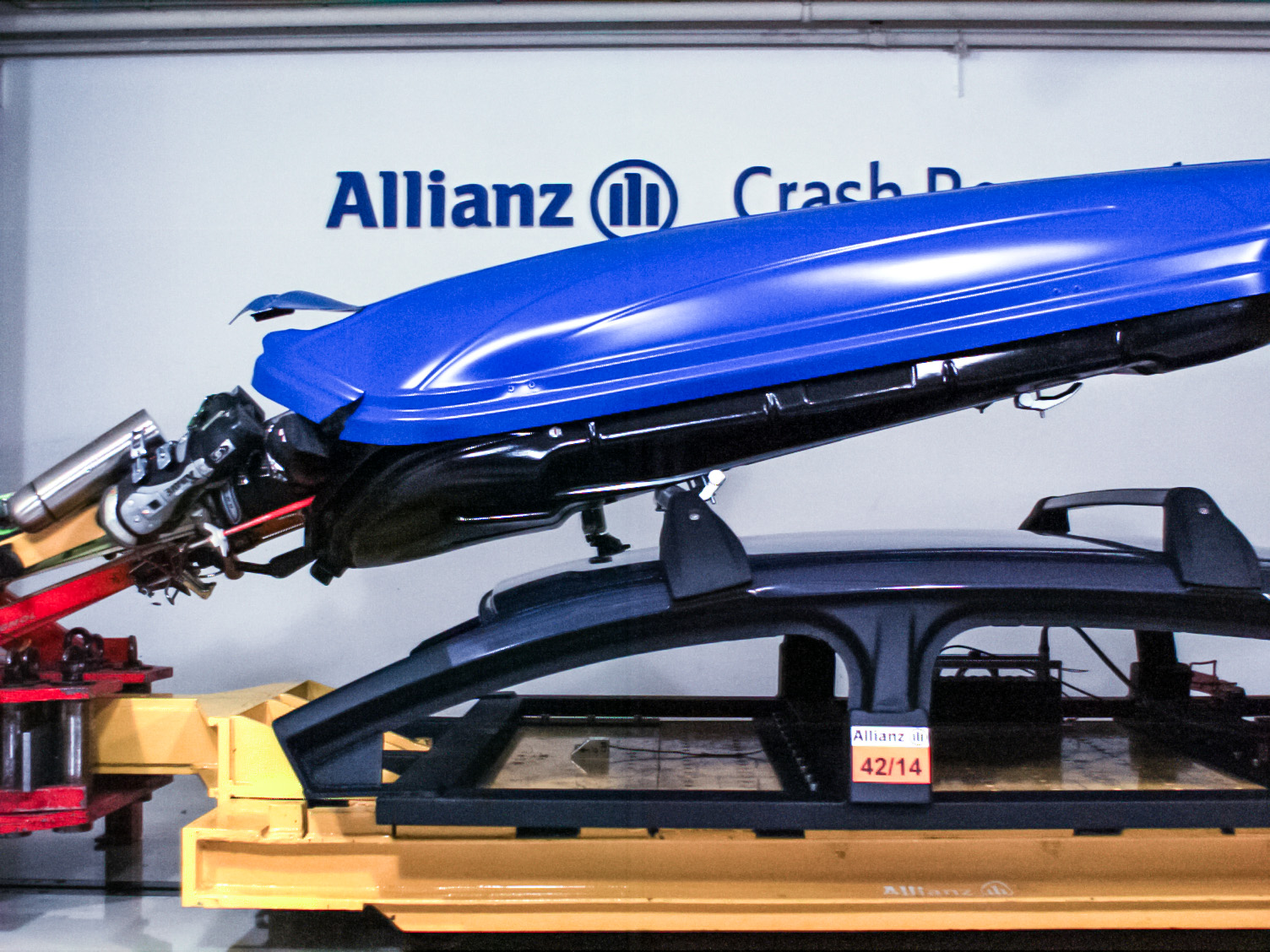Topics at the Allianz Center for Technology:
Roof box - Safe on your skiing holiday

January 2019
A test setup with the following details was tested:
Frontal impact at 50 km/h
The roof box was loosely loaded with winter sports equipment (skis, ski boots, ice stick, drink bottles). The permissible load capacity of the roof box was not exceeded.
The load was not secured in the roof box, as is often the case.
The following results were obtained in the crash test:
The unsecured contents of the roof box shifted to the front due to the acceleration forces acting, the skis broke through the front wall of the box almost unbraked.
In addition, the roof box was partially detached from the base carrier because the clamp fastenings, which were open on one side, could not withstand the forces.
The following video illustrates the consequences of an incorrectly loaded roof box in a frontal collision at 50 km/h. The roof box was not loaded correctly when the frontal collision took place.
External video
This video is loaded in a YouTube player. This means that Google collects information about your use of the information provided and uses it for analysis and marketing purposes. However, if you would still like to view this video, you must change the cookie settings.
Open cookie settings
The following recommendations can be derived from the observations described:
When using a roof box, check the permissible roof load. These can be found in the operating manual of your vehicle. As part of the test, the weight of the roof box, roof rack and load must be added together.
Also check the load capacity of the roof rack, which is specified in its operating instructions.
Do not load the roof box beyond its maximum payload. Heavy individual items, e.g. ski boots, should be stowed at the bottom of the trunk and preferably not in the roof box. Bulky items that can be easily lashed down (e.g. skis) as well as lighter items (e.g. clothing, ski helmets) can be transported in the roof box.
When attaching the roof rack and roof box, follow the manufacturer's installation instructions carefully. Preference should be given to roof boxes whose fastening elements completely enclose the rail of the roof rack.
The roof box should offer good lashing possibilities on the inside with stable lashing eyes and/or brackets to secure the load. These lashing devices should be made of metal. Plastic can become brittle in winter, is generally more sensitive to impact and can be damaged, for example, by hard objects such as ski bindings when loaded carelessly.
When driving with a roof box, pay attention to the changed driving behaviour of the vehicle. The higher centre of gravity makes the vehicle more unstable when cornering or braking. The superstructure also changes the aerodynamics of the vehicle and makes the car more susceptible to wind.
And think of the changed headroom! This applies especially to higher vehicles such as vans, SUVs etc. when entering underground garages.
Also remember to check or adjust the tyre pressure before starting the journey if there is an additional load.
The total payload with passengers, luggage and superstructures must not exceed the permissible total weight of the vehicle.
The AZT wishes you a good and accident-free journey!